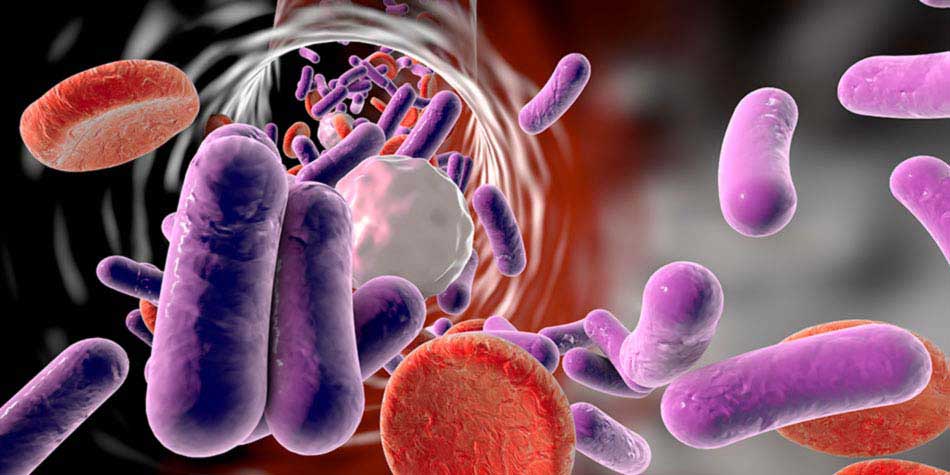
Sepsis, also called septicemia or bacteremia, is the body’s inflammatory response to a bacterial infection. It spreads quickly through the body via the bloodstream and requires emergency medical care. If the original infection is not treated, it can trigger an inflammatory response that may result in leaking blood vessels and impaired blood flow.
Severe sepsis is associated with a drop in blood pressure, which reduces the amount of oxygen and nutrients going to the body's organs. This loss of nutrients can cause serious damage to the organs. Septic shock is the most severe form of sepsis and occurs when adequate blood pressure cannot be restored despite treatment with intravenous (IV) fluids. Septic shock may lead to multiple organ failure and even death.
Prevalence of Sepsis
More than 1 million Americans contract sepsis each year and approximately 15 to 30% of them die from complications caused by the condition.1 Sepsis cases are increasing, perhaps because of:
- Increased awareness and diagnosis
- Those with chronic diseases, who are at increased risk of developing sepsis, living longer
- Antibiotic-resistance that limits treatment options for those with sepsis
Sepsis is not contagious, but the germs that cause the original infection may be.
Causes of Sepsis
Sepsis can be triggered by many different kinds of infections, including:
- Bacterial—most common
- Fungal
- Viral
- Parasitic
Septic shock happens when an infection overwhelms the body.
Risk Factors for Developing Sepsis
Infants and people over 65 years old are most susceptible to developing sepsis. Other factors that may increase the chance of infections that result in sepsis are:
- Weakened immune system
- Absence of the spleen
- Cancer
- Low white blood cell counts
- Chronic diseases like diabetes or AIDS
- Previous surgery
- Severe burns or physical trauma
According to the Centers for Disease Control and Prevention (CDC), “The most frequently identified germs that cause infections that can develop into sepsis include Staphylococcus aureus (staph), Escherichia coli (E. coli), and some types of Streptococcus.2 For patients in a hospital, common sites of infection are:
- IV lines
- Surgical wounds
- Surgical drains
- Sites of skin breakdown, like bedsores or pressure ulcers
Symptoms of Sepsis
Symptoms of sepsis may include one or more of the following:
- Fever
- Shivering or feeling very cold
- Feeling confused or disoriented
- Clammy or sweaty skin
- Shortness of breath
- Chills or shivering
- Pain or discomfort
- Rapid, pounding heartbeat
- Irregular blood pressure
- Reduced urination
- Diarrhea
If you are not feeling better after a recent surgery, tell your doctor immediately so that you can be assessed for the possibility of sepsis.
Diagnosing Sepsis
Your doctor will ask about your symptoms and medical history. In addition, a physical exam will be done.
Tests may include the following:
- Blood tests to show oxygen levels and kidney function in order to assess damage to specific organs; white blood cell counts; and inflammatory markers to indicate the seriousness of the infection
- Cultures to check for infectious organisms
- Electrocardiogram (EKG) to check for heart rhythm irregularities
- Imaging tests to look for specific sources of infection, like pneumonia
Treatment Options for Sepsis
Sepsis requires immediate care to treat both the original infection and its subsequent impact on other areas of the body. Treatment may include:
Supportive Measures for Shock
Typically, sepsis patients are admitted to the intensive care unit (ICU) where they are given one or more of the following treatments:
- IV fluids
- Medications to increase blood pressure and blood flow to the organs
- Extra oxygen
- Insulin to help regulate blood sugar
- Corticosteroids to reduce the inflammatory response, especially if fluids are not working
If the lungs begin to fail, you may be put on a mechanical ventilator to help you breathe. Other therapies, such as kidney dialysis, or supportive measures also may be used.
Medications
Once the cause of the infection is determined, you will be given high doses of one or more antibiotics or antifungal medications.
Surgery
Surgery may be performed to remove any dead tissue or to drain infections.
Preventing Sepsis
Most cases of sepsis and septic shock cannot be prevented, but there are steps you can take to help prevent getting infections that may escalate into sepsis. The CDC recommends these steps:
- Treating bacterial and other infections promptly
- Getting recommended vaccines
- Practicing good hygiene, like hand washing, and keeping cuts clean and covered until healed
- Knowing the symptoms of sepsis and seeking medical care immediately if you suspect sepsis or if you have an infection that does not heal or gets worse.
Life After Sepsis
Many people with sepsis have a complete recovery, but those with a chronic illness may have permanent organ damage. For example, in someone who already has impaired kidneys, sepsis can lead to kidney failure that requires lifelong dialysis.
In addition, some researchers believe that sepsis may unsettle the immune system. The Sepsis Alliance reports that more than half of sepsis survivors suffer from post-sepsis syndrome (PSS). Long-term effects of sepsis may include:
- Damaged organs
- Insomnia
- Nightmares
- Disabling muscle and joint pains
- Fatigue
- Poor concentration
- Lowered cognitive functioning
- Depression or lowered self-esteem
$webqFacilityNumber
Need a Physician?